In the game of Finca, according to the rule book: “The players take the roles of Mallorcan farmers, who strive to harvest as many of the island‘s tropical fruits: figs, almonds, olives, oranges, grapes, and lemons, as possible. The players deliver their harvested fruits to the island communities, which have constantly changing requirements during the course of the game.”
Mallorca, for those not in the know, is the largest island in the Balearica Islands which are a part of Spain. And according to Wikipedia: “a finca (Spanish for ‘an estate’) refers to a piece of rural or agricultural land, typically with a cottage, farmhouse or estate building present, and often adjacent to a woodland or plantation.”
Indeed, the game board of Finca is divided into different regions—each featuring an estate that is requesting specific items. Each request is represented by a tile and as players fulfill these requests, they will collect the tiles thereby revealing new requests. Each collected tile is worth points and once each region is emptied of its tiles, that region scores additional points for the players that have collected the majority of specific types of fruit on their collected tiles. Then a finca is built in the region. After a certain number of these have been built, the game ends and the player who has the highest score wins.
This is, of course, a high-level overview. If you’ve heard enough and want to see what I think of the game, then feel free to skip ahead to the Thoughts section. Otherwise, continue reading as we delve into more detail about the game of Finca.
Setup
A game of Finca is set up like this:
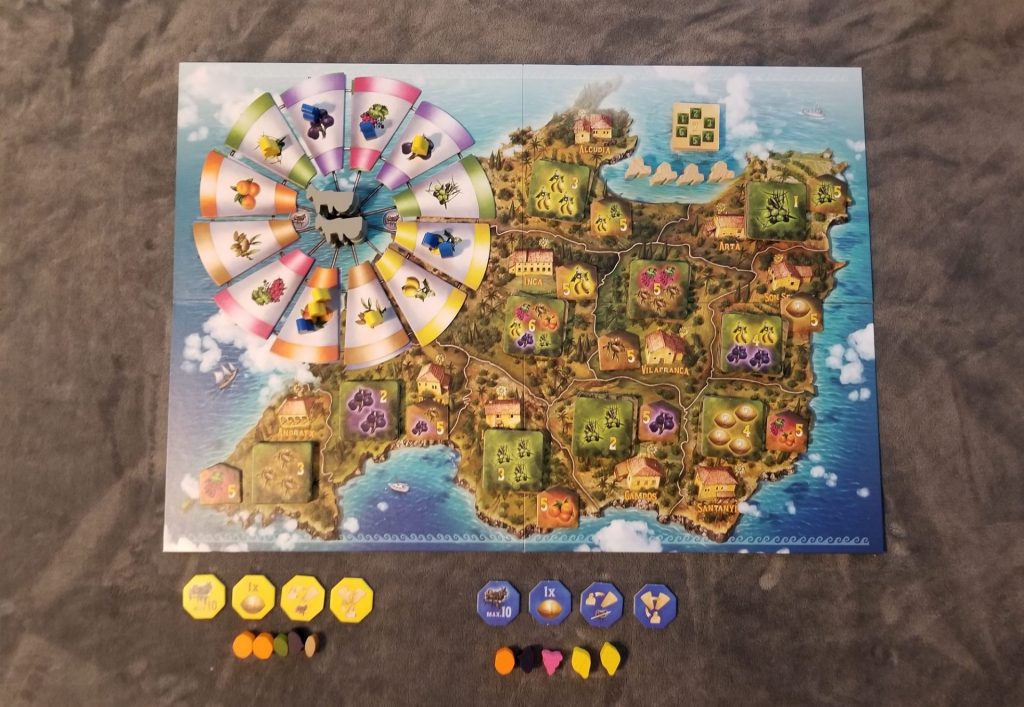
The windmill blades are shuffled and arranged to form the windmill. A number of Donkey Cart tokens (determined by player count) are placed into the middle of the windmill. All of the Fruit tiles are shuffled and placed face down into each region in stacks of 4. Each region also receives a random Finca tile. Next to the board, the Bonus tiles have been placed in a stack in descending order from top to bottom along with a number of wooden Fincas (also determined by player order). The wooden Fruits are set aside in a supply close by.
Each player selects a color and receives the matching set of four Action tiles along with a number of wooden Farmers (also determined by player count). Then a start player is selected and the players will take turns seeding the windmill, one Farmer at a time, and collecting their starting fruits. For instance, if a player places one of their Farmers on a windmill blade featuring a lemon, then they will collect a lemon.
Once this has been completed, the game can begin.
‘Round the Windmill
Before you can do well at Finca, it is imperative to understand the way that movement around the windmill works and how the rewards for movement are handed out.
First, you will select a Farmer that you would like to move (and they always move clockwise around the windmill). The number of spaces that your Farmer must move is determined by the number of Farmers that reside on the windmill blade it is being moved from. For example, if there are two other Farmers on the windmill blade along with your own, then your farmer moves a total of three windmill blades away.
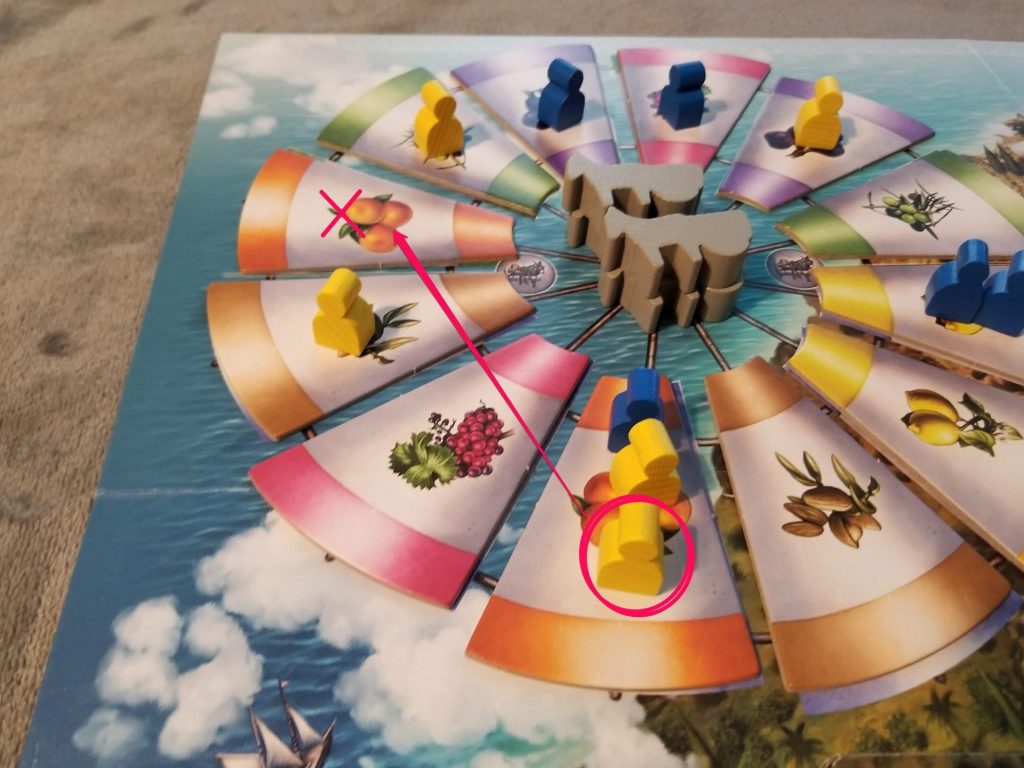
The Farmer then collects the type of Fruit that is shown on the windmill blade on which it lands. The amount of Fruit collected is determined by the number of Farmers that reside on the windmill blade on which it lands. So, if your Farmer lands on a windmill blade featuring a fig and there are already three other Farmers there, then you will collect a total of four figs.

During the course of a Farmer’s movement, they may cross one of the two dividing lines (located at the halfway mark on either side of the windmill). If crossing one of these lines, the player will collect a Donkey Cart token if there are any. If there aren’t any, then every player must return all of their Donkey Cart tokens back to the middle and then the active player collects one of them. This is important to keep in mind because Donkey Cart tokens are critical for delivering goods.
It’s All in the Delivery
Instead of moving one of their Farmers, a player may opt to deliver up to a total of six combined fruits to as many regions as they can. Each region contains a face up tile which shows a certain fruit or combination of fruits that it desires. If the player has the Fruits to match the desired request(s) they discard a Donkey Cart token along with the depicted fruits and then collect the face up Fruit tiles matching the Fruits they discarded. These tiles, and any collected tiles throughout the course of the game, are kept face up in front of the player.
For instance, a player may look out at the options on the board and spy one region asking for two figs, another requesting a single lemon, and another looking for three oranges. Looking at their supply of collected Fruits, they realize they have everything needed to meet these various demands. So, they discard a Donkey Cart token, one lemon, two figs, and three oranges and collect those tiles. Collectively, those tiles are worth a total of six points.
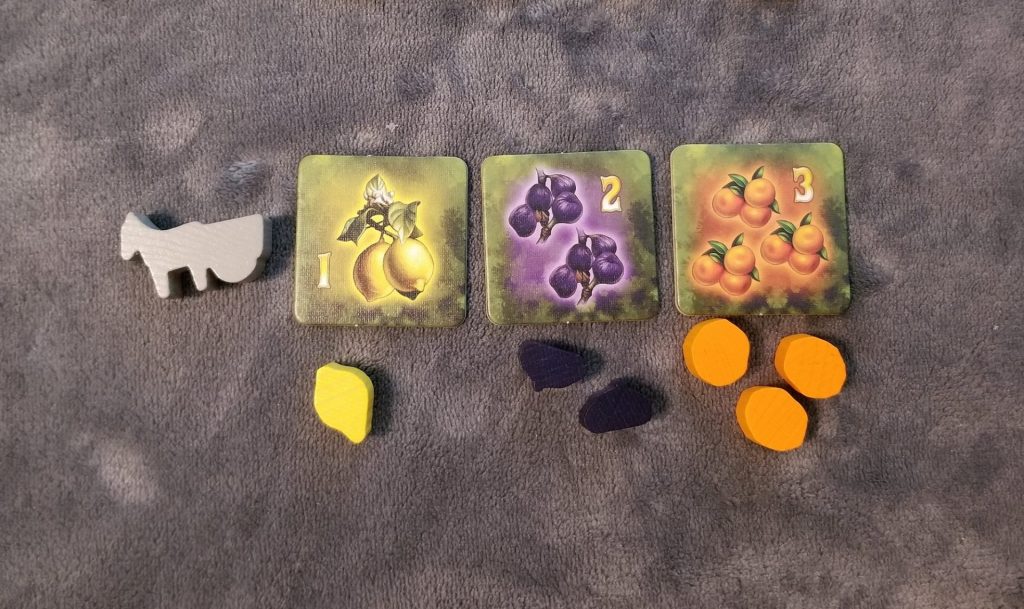
Of course, a player can deliver fewer than six Fruits if they want to, but it usually isn’t a desirable thing to do. However, there are instances where delivering fewer than six Fruits may be an attractive option:
- Each different amount of fruit belongs to a set. If a player completes a one Fruit, two Fruit, three Fruit, four Fruit, Five fruit, and six Fruit tile set then they collect the Bonus token from the top of the stack. If you’re just a single one Fruit delivery away from earning a Bonus token, then you might just make a one fruit delivery.
- Each region is seeded with a Finca tile at the beginning of the game. This tile, featuring a specific type of Fruit, is worth five points and will be rewarded to the player that has the majority of that type of Fruit across all of their collected Fruit tiles when the region is emptied out. If there’s only a single tile left in the region and you currently have a tenuous hold on the majority, it may be worth your while to make a sub-optimal delivery in order to collect the Finca tile.
- In the spirit of the previous point, sometimes it may be desirable to deliver fewer fruits in order to deny someone else the opportunity to take a majority.
Aaaannnnnddddd…. ACTION!
Each player begins the game with four Action tiles.
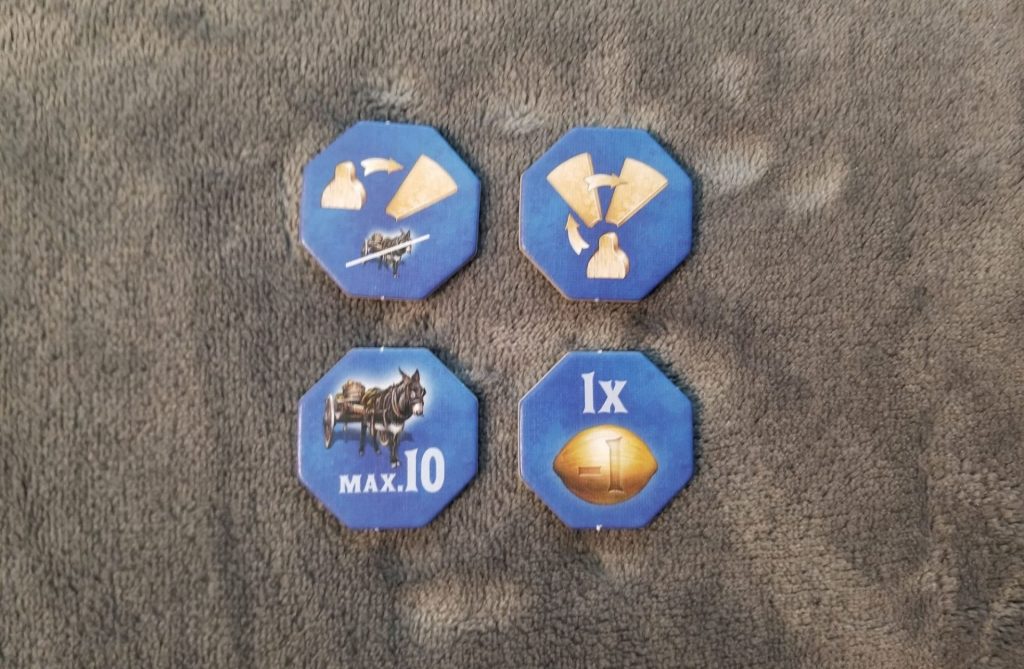
Each of these tiles is single-use and provides different rule-breaking abilities:
- Move one of your Farmers to any other windmill blade of your choice, but you don’t get to collect any Donkey Cart tokens along the way.
- Perform two Farmer moves in a row, making it possible to collect two Donkey Cart tokens in a single turn.
- Make a delivery of up to ten Fruits as opposed to the standard six.
- Deliver one Fruit less than the amount required by a Fruit tile as long as at least one Fruit is delivered to the tile.
Once used, the Action tile is returned to the box.
Game End
The game ends immediately as soon as the last Finca (set aside during setup) is built. Then the players add up their totals from their collected Fruit, Finca, and Bonus tiles. Any unused Action tiles are worth two points apiece. Ties are broken by the player that has the most Fruit left over.
Thoughts
Finca is one of those games that sucks you in with its idyllic theme, charming artwork, and easy rules. Forty-five minutes later, you’re covered in sweat, on the edge-of-your seat praying to all the deities you can think of that none of your opponents claim that last Fruit tile from the lemon region because you desperately need those points. Finca is a multi-branched decision tree where every choice is the right one but also, potentially the wrong one. Picking up Fruit is never bad. After all, it’s needed to make deliveries. Delivering Fruit is how you earn points, so that’s never a bad move either. But is it the right one?
There’s a lot of open information in Finca, but there’s always just enough that’s hidden that it creates a lot of doubt. Couple that with the unpredictability of your opponents and you’ve got a game where even the simplest decisions become tense brain burners. Take moving your Farmer on the windmill, for instance. How many Donkey Cart tokens have been claimed? Are your opponents getting close to being able to make several high scoring deliveries? Can you cross the dividing line to cause a Donkey Cart tile reset? For that matter, how close are you to having what you need to make a delivery or two? Is there a way to move one of your Farmers to get what you need without creating a huge opportunity for your opponents? Is there a huge opportunity out there for you to gain a massive amount of Fruit and should you take it? Will having all of that Fruit really benefit you or is there a more immediate need to consider? On and on the mental gymnastics go. That’s just moving your Farmer, never mind actually making a delivery.
Finca is a delight to play and a delight to own. I didn’t know what I was getting myself into the first time that I tried it, but I’m glad that I did. If you give it a try, I’m confident you’ll feel the same.


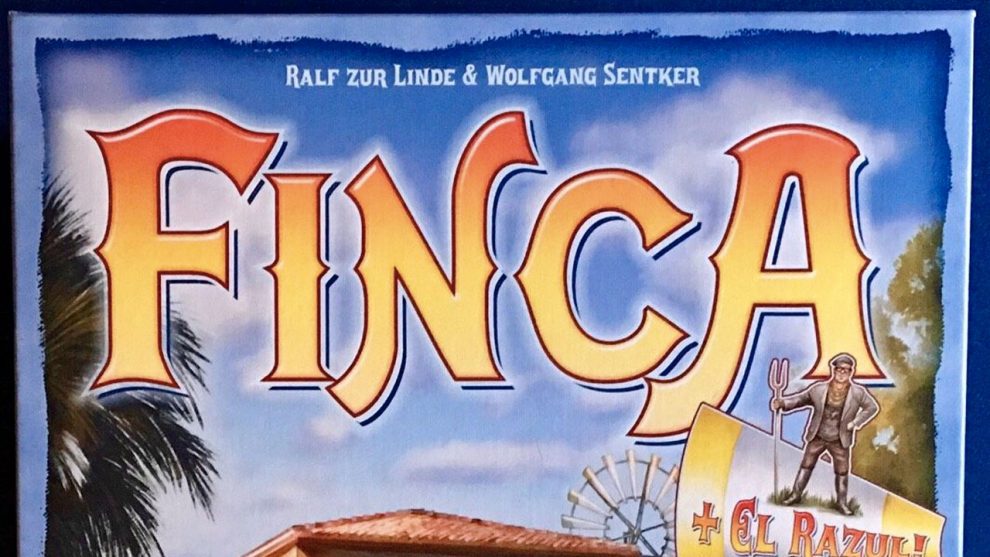


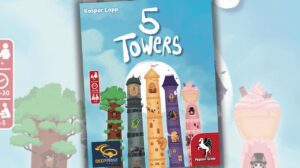
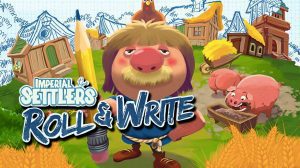




Add Comment